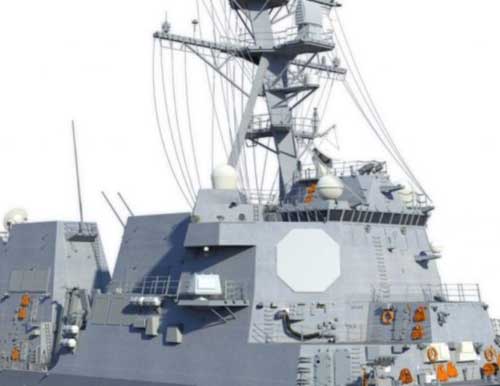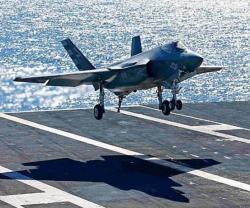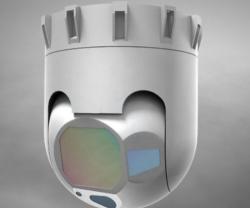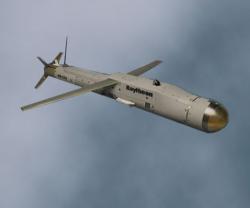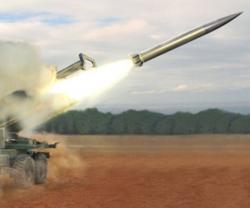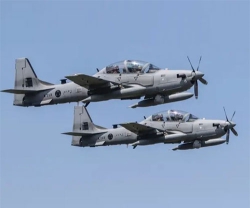Raytheon Company’s AN/SPY-6(V) Air and Missile Defense Radar searched for, acquired and tracked a ballistic missile test target during the radar’s first dedicated Ballistic Missile Defense exercise at the U.S. Navy's Pacific Missile Range Facility (PMRF), Kauai, Hawaii.
This result followed a series of successes for AN/SPY-6, including the tracking of integrated air and missile defense targets of opportunity, satellites and aircraft.
“We remain on track to deliver an unprecedented capability to the Fleet. The live testing we’ve been doing here at PMRF continues to demonstrate the maturity of the hardware and software and the performance of the overall system. The radar performed exactly as we expected it to during this mission - all systems were green,” said Raytheon’s Tad Dickenson, director of the Air and Missile Defense Radar program.
“This marked a historic moment for the Navy. It’s the first time a ballistic missile target was tracked by a wideband digital beamforming radar. AN/SPY-6 is on track for delivery to DDG 51 Flight III,” said U.S. Navy Captain Seiko Okano, Major Program Manager for Above Water Sensors, Program Executive Office Integrated Warfare Systems.
Since installation at PMRF in May 2016, AMDR has tracked targets of increasing complexity, demonstrating that the radar is meeting its performance requirements. In October 2016, AN/SPY-6 first tracked multiple satellites, hundreds of miles above Earth, from search and acquisition through their orbits. In the following month, the radar executed its first integrated air and missile defense track by simultaneously tracking aircraft and satellites. Most recently, in conjunction with a Standard Missile 3 Block IIA SFTM-01 flight test, AN/SPY-6 executed an engineering exercise where it searched for, acquired and tracked a medium range ballistic missile target, from launch through flight.
These are the most recent milestones as the Navy's new radar advances on schedule through Engineering and Manufacturing Development. Soon to transition to Low-Rate Initial Production, AN/SPY-6(V) remains on track for delivery for the first DDG 51 Flight III destroyer.
AN/SPY-6(V) provides greater capability – in range, sensitivity and discrimination accuracy - than currently deployed radars, increasing battlespace, situational awareness and reaction time to effectively counter current and future threats. It is the first scalable radar, built with Radar Modular Assemblies - radar building blocks. Each RMA, roughly 2’ x 2’ x 2’ in size, is a standalone radar that can be grouped to build any size radar aperture, from a single RMA to configurations larger than currently fielded radars.
The U.S. Navy’s new Enterprise Air Surveillance Radar leverages the highly-scalable design and mature technologies of AN/SPY-6 in a scaled nine-RMA configuration to meet the mission requirements of carriers and amphibious ships. The commonality – in both hardware and software – with AN/SPY-6 offers a host of advantages, including maintenance; training; logistics; and lifecycle support.
Raytheon Company, with 2016 sales of $24 billion and 63,000 employees, is a technology and innovation leader specializing in defense, civil government and cybersecurity solutions.
With a history of innovation spanning 95 years, Raytheon provides state-of-the-art electronics, mission systems integration, C5ITM products and services, sensing, effects, and mission support for customers in more than 80 countries.

